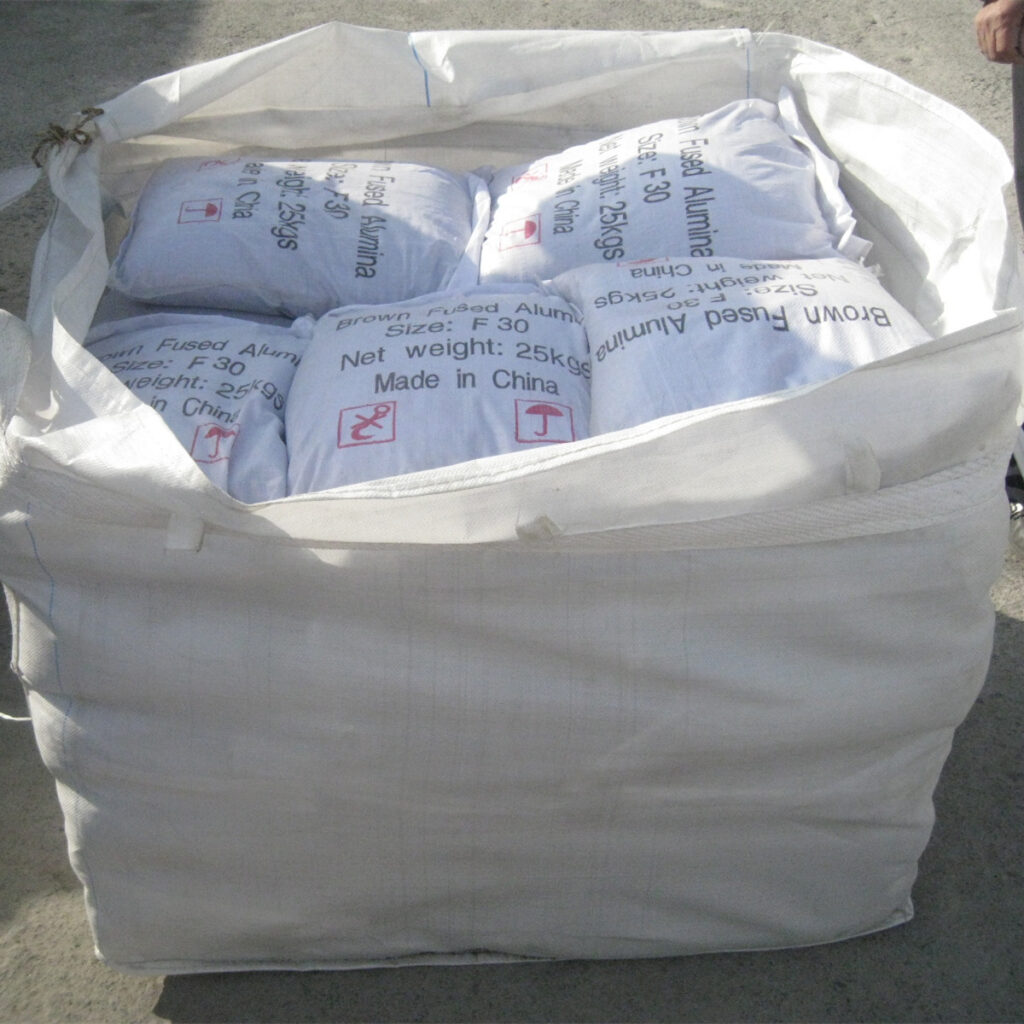Brown Fused Alumina (BFA), often called brown aluminum oxide, is a man-made abrasive produced by fusing a mixture of bauxite (an aluminum ore), carbonaceous materials, and iron filings in an electric arc furnace at extremely high temperatures. It is one of the most versatile and widely used blasting abrasives due to its excellent balance of hardness, toughness, and cost-effectiveness.
Key Characteristics & Advantages
High Hardness (Mohs scale 9.0)
Effect: It can efficiently cut through the toughest contaminants, coatings (paint, epoxy), and mill scale, making it ideal for aggressive surface preparation.
High Toughness & Durability
Effect: The grains are very durable and resist fracturing upon impact. This allows for multiple reuses, reducing consumption and overall operational cost. It also produces less dust compared to brittle abrasives.
Sharp, Angular Geometry
Effect: It acts like millions of tiny cutting tools, providing a superior “key” or “anchor profile” on the substrate surface. This dramatically improves the adhesion of subsequent coatings (paints, linings).
Chemical Purity & Stability
Effect: It is free of silica (SiO₂) and other contaminants, making it safer for operators (no risk of silicosis) and suitable for treating metals like stainless steel and aluminum without causing embedded contamination or “iron poisoning.”
High Density
Effect: The heavy grains carry more kinetic energy, resulting in high-impact blasting and faster cleaning speeds.
Primary Applications
Brown Fused Alumina is a “workhorse” abrasive for demanding industrial applications:
Surface Cleaning & Descaling
Shipbuilding & Repair: Removing rust, old paint, and marine growth from hulls and decks.
Heavy Steel Structures: Preparing bridges, storage tanks, and offshore platforms for new coating systems (achieving SA 2.5 or SA 3 standards).
Mold Cleaning: Effectively cleans rubber and plastic molds without damaging them.
Surface Profiling / Roughening
Coating Preparation: Creates the ideal anchor pattern for paints, powder coatings, and other linings.
Thermal Spray & Electroplating Prep: Ensures a strong mechanical bond for coatings.
Bonding Preparation: Roughens metal surfaces before adhesive bonding of composites.
Deburring & Finishing
Removes small burrs and sharp edges from machined parts.
Creates a uniform, non-reflective (satin) finish on stainless steel and other metals for decorative purposes.
Specialized Applications
Used in water-jet cutting as an abrasive media.
Etching and carving on stone and glass.
Common Grit Sizes (Mesh Sizes)
The particle size is measured in “mesh.” Lower numbers indicate coarser grit.
Coarse Grit (12/20, 16/30 Mesh): For heavy-duty jobs like thick rust removal, concrete etching, and fast cleaning. Produces a deep anchor profile.
Medium Grit (36/60, 46/80 Mesh): The most common range. Ideal for general-purpose descaling, paint removal, and creating a standard profile for coatings.
Fine Grit (80/120, 120/220 and finer): For fine finishing, light cleaning, delicate deburring, and creating a smooth, satin surface.



